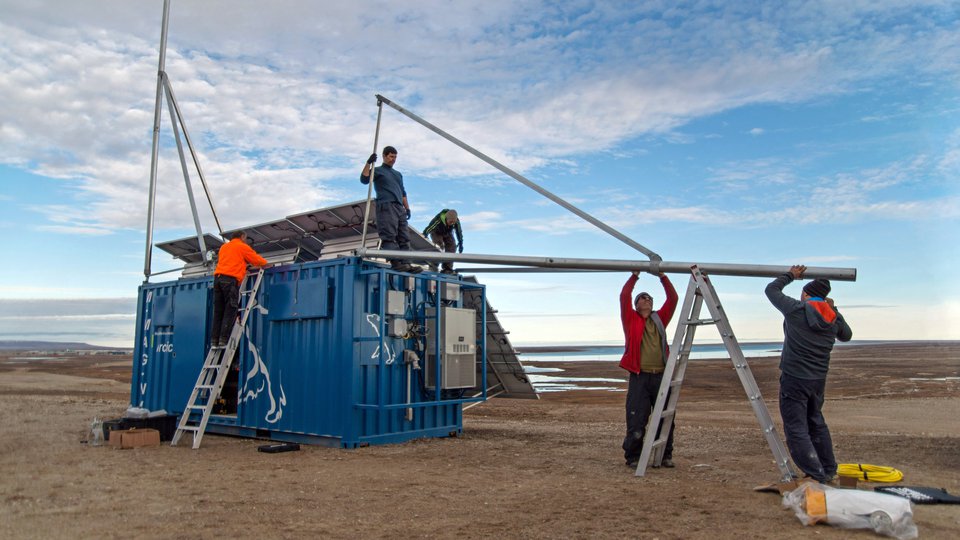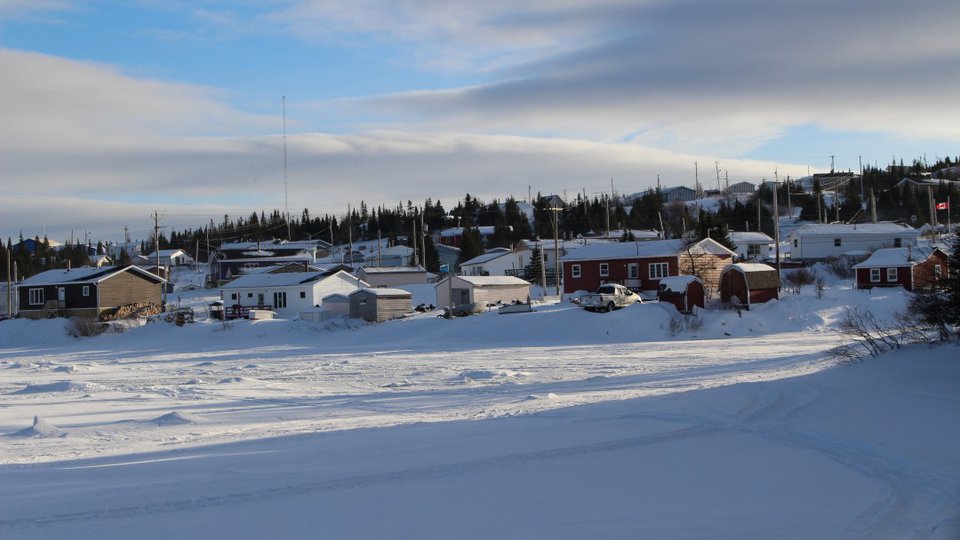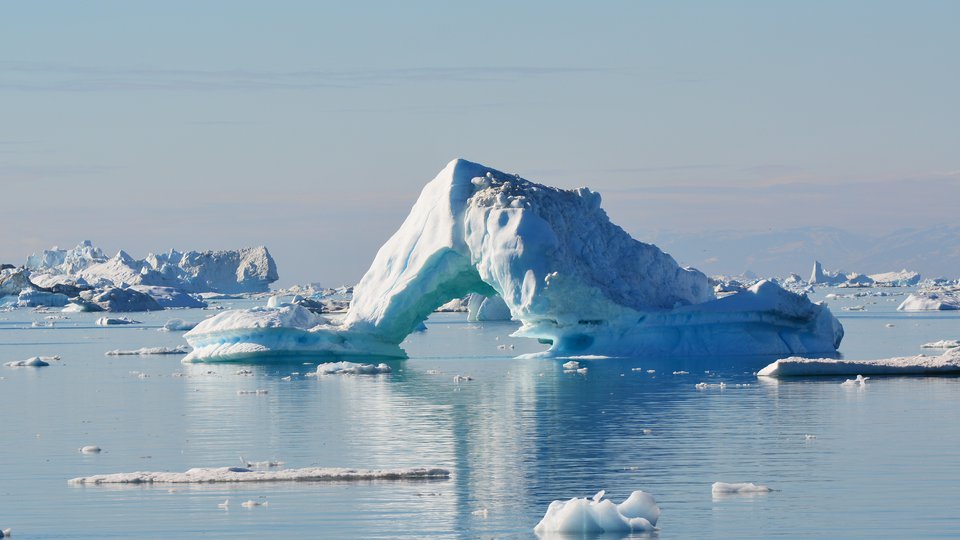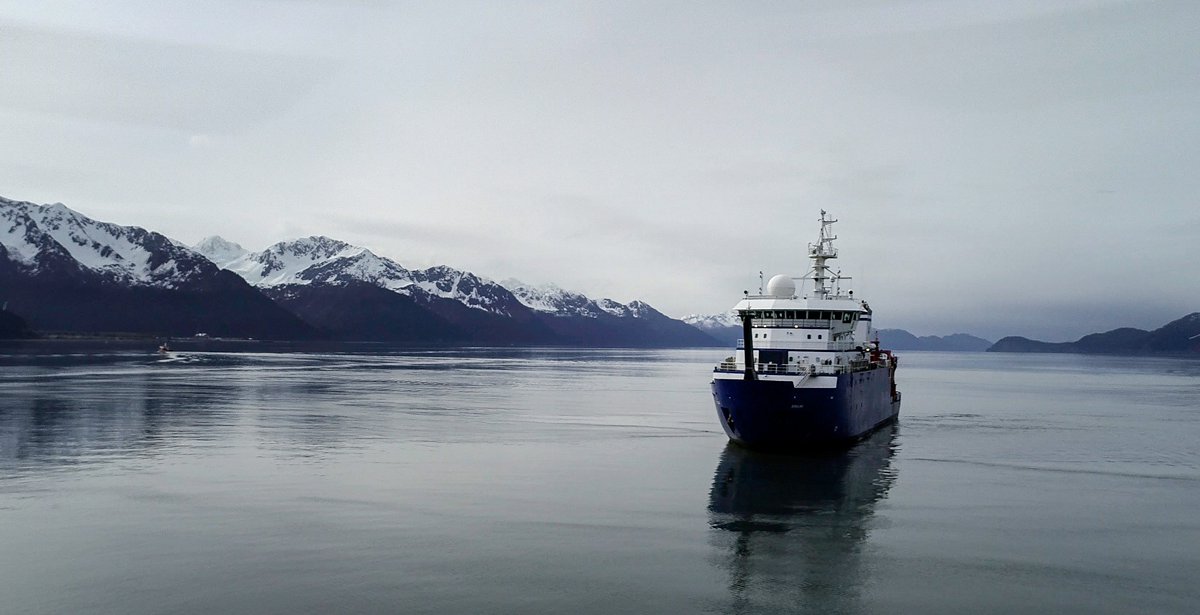
ne of the aims of the Arctic Integrated Ecosystem Research Program is to build on our understanding of how Arctic marine ecosystems are responding and will respond to a changing climate. Few places on Earth are experiencing the same degree of warming as the Arctic.
There is, however, an uncomfortable reality to the whole enterprise of observational oceanography. Namely, our scientific activities are themselves contributing in a small way to the very problem we are trying to understand. Ship-based operations consume a lot of fuel, and in doing so, these activities result in the emission of a sizeable quantity of carbon dioxide into the atmosphere. In a small, almost insignificant manner, we are helping to melt away the very sea ice we see disappearing from the Arctic.
According to one engineer I spoke with, Sikuliaq burns anywhere from 2,000-6,000 gallons of diesel fuel per day, depending on the day’s activities and conditions. Over the course of our 24-day research cruise, we will burn through more than 100,000 gallons. Before our departure from Seward, I watched the crew load more than 120,000 gallons, a fill-up session that lasted several hours as diesel fuel was pumped into the onboard fuel tanks through a high-flow fuel line the diameter of a fire hose.
Compare that to your last stop at the gasoline pump. That is a lot of fuel. By my back of the envelope calculation, that one fuel up was probably about ten times more fuel than the total amount of gasoline I have purchased directly during my entire lifetime.
And all of that fuel translates into a literal boatload of carbon dioxide emissions; more than 1,000 metric tons of carbon dioxide, in fact. Of course, even that is a minuscule fraction of the total global emissions.
I don’t mean to single out our vessel, project, or line of work. I do believe our scientific work out here is important, even necessary. But there are also many other sectors of the economy with high emissions that could be justified in similar ways.
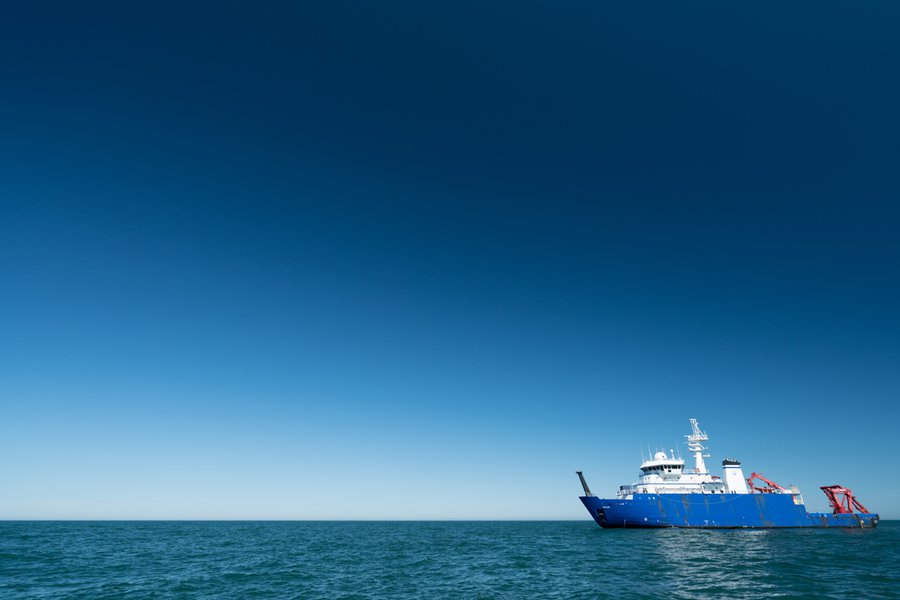
The R/V Sikuliaq. Photo by Andrew McDonnell
We oceanographers are like journalists at the front lines of the climate crisis, and yet we seem to be throwing a few small grenades of our own.
All in all, Sikuliaq is a very efficient machine for what it does. It is a modern, global class, and ice-capable research vessel with four large diesel electric generator sets in the engine room below the main deck. Those generators are switched on or off as necessary to provide electrical power to the electric propulsion motors and other smaller loads throughout the ship. It uses a high purity grade of diesel fuel that is cleaner and less polluting. Waste heat from the generators and exhaust system is recaptured and put to work for other purposes like space heating, making freshwater from seawater, and heating water. This waste heat recovery saves the ship thousands of gallons of fuel. Moreover, the engineering team below deck is constantly at work making sure everything is operating as efficiently, reliably, and safely as possible. The captain and mates make the necessary adjustments to the ship’s speed, course, and route in order to meet the scientific mission of the cruise while minimizing the rate at which our research vessel burns fuel.
But there is an insidious irony to the whole thing. Here we are, a boat full of scientists who are acutely aware of the climate problem, its causes, and impacts on the planet. We are equipped with advanced sensors and instruments capable of measuring the rising temperatures of this Arctic realm, observing how the lack of sea ice impacts the marine ecosystem, quantifying the concentrations of carbon dioxide in the air and dissolved in within the ocean as they rise. And yet it is partly our own research activities, multiplied by the plethora of other fossil fuel powered human enterprises all over the planet, that are driving the very changes we are observing.
We oceanographers are like journalists at the front lines of the climate crisis, and yet we seem to be throwing a few small grenades of our own.
If we are to limit global warming to below an average of 2 degrees Celsius, then virtually every sector of the global economy will need to be fully decarbonized by mid-century.
For me, all of this is a reminder of just how pervasive the use of fossil fuels is across all human activities and how challenging it will be to mitigate the climate crisis. If we are to limit global warming to below an average of 2 degrees Celsius, then virtually every sector of the global economy will need to be fully decarbonized by mid-century. That’s about the time Sikuliaq nears the end of its expected 40-year operational lifespan. It also means that we need to start bending our emissions curve downwards immediately to get on track with that goal. The ships and power generation facilities that we build from today onwards must be emissions free, or else face the costly risk of early retirement or mid-life retrofit.
It will not be easy. It is not even clear what will power the emissions free research vessels of the future. There are some promising technologies, but they are mostly in the demonstration phase. For example, perhaps ships of the future could be powered by hydrogen produced from renewable energy. Hydrogen could be stored as a stable, liquid hydride fuel and supplied to converted diesel engines or even purpose built fuel cell generators.
In some respects, the transition is already underway, as ship operators around the world are shifting to more fuel-efficient designs in response to regulations and the need to cut costs. Batteries, solar power, or hydrogen are being incorporated into new ship designs. The topic of “Greening the Fleet” has been discussed for several years at meetings hosted by the University National Oceanographic Laboratory System, the organization that oversees the operation of Sikuliaq and other research vessels in the academic fleet.
Aside from technological advances, there also must be some sort of mechanism for incentivizing the transition to lower emissions and accounting for the full social and environmental cost of using fossil fuels as an energy source. Putting an economy-wide price on fossil fuels would be one way to accomplish that goal.
The task of making the transition to a carbon-free future is daunting. But it is imperative that we move forward and transform oceanographic research and every other human endeavor into a carbon neutral enterprise. The future of the Arctic ecosystems we are studying here—and much more—may depend on it.
Andrew McDonnell is an Assistant Professor of Chemical Oceanography at the University of Alaska Fairbanks.
This blog was originally posted on the The North Pacific Research Board's (NPRB) Arctic Program Blog, an integrated ecosystem research program (IERP) studying marine processes in the northern Bering and Chukchi Seas in 2017-2021.
